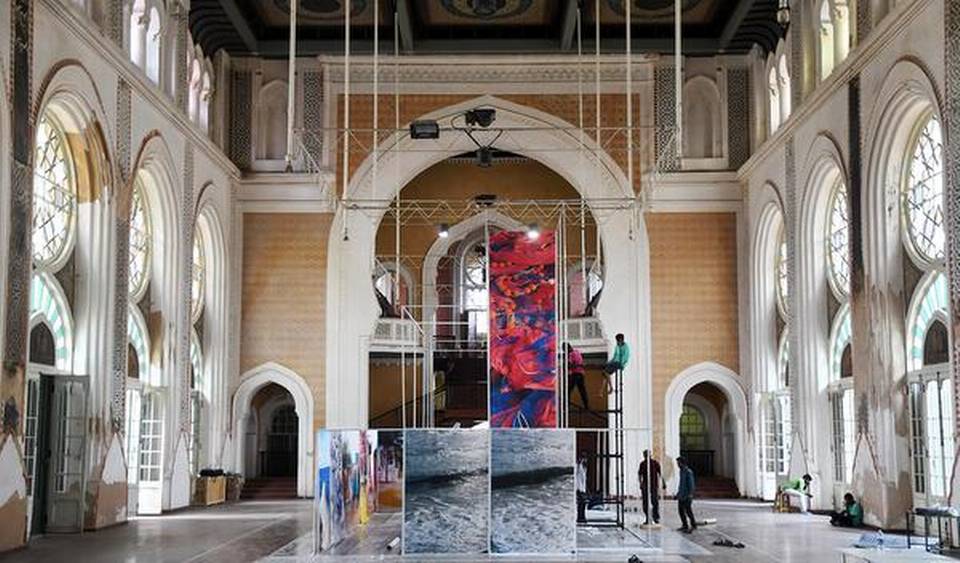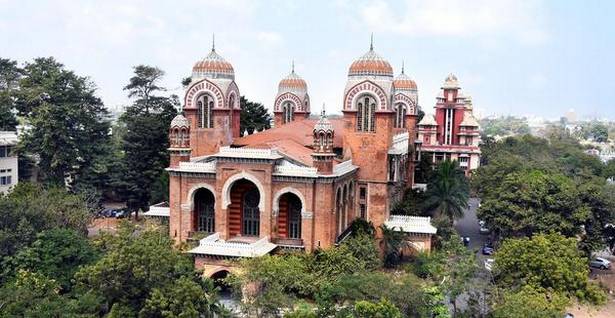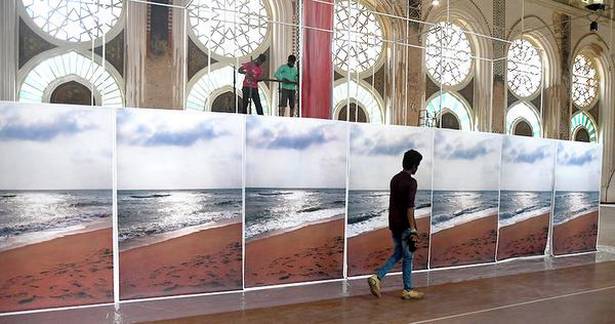The beauty of its Moorish-themed walls and exquisite high ceiling is no longer hidden behind shuttered windows — Senate House is one of the venues of Chennai Photo Biennale
It stands at the site of what was once the Nawab of Arcot’s artillery park. From its shady boulevard guns were fired to greet visitors. Today, Senate House stands a silent sentinel gazing at the Marina as students mill about its grounds, pigeons roost in its eaves and visitors throng the Chennai Photo Biennale’s exhibition held in its ornate halls.
Shuchi Kapoor, founding member, CPB, who was also instrumental in getting permission for venues, says, “We had heard about how beautiful Senate Hall was and how it would lend itself to the Biennale. We started work on getting permissions to host exhibitions in 2017 and through The Hindu, Goethe Institut and the Head of the Department of Journalism were able to access the office of the Vice Chancellor. It took us a year to get the permission. It had been renovated recently but hadn’t been used. Despite low maintenance it was impressive when opened up and we knew it would make for a perfect venue. We hope this will push our ‘adopt a venue’ programme, going forward, that will involve corporates lending support to upkeep these lovely spaces.”
Senate House was completed in 1879. The library and teaching departments were built in similar style to lend it continuity. The fragile beauty of Senate House was the result of the genius of Robert Fellowes Chisholm who as a young engineer at 21 won a contest and was chosen to design Presidency College and a building to house the offices of the University. Chisholm is also credited with designing the Lakshmi Vilas Palace and the Museum in Baroda, Lawrence school in Ooty and the Rangoon Cathedral. In a way, he changed the skyline of Madras and by the end of his tenure in India in 1902 was considered the master of Indo-Saracenic architecture .
The main door of Senate House faces the Centenary buildings and opens to the Great Hall (150 feet long, 60 feet wide and 50 feet high from boarded floor to ornate, canvas ceiling). It was here that convocations were once held, here that students in robes and academic caps celebrated in jubilation before the University expanded and convocations were held at the Centenary auditorium across the road. When the first Assembly was constituted in 1937, it was here that it met.
Light from the evening sun filters through the arcaded verandahs supported by stone capitals with Indian figurines. The red hand-pressed brick is firm to the touch and cool despite the searing heat. Broomhall’s tiles cover the roofs from where pigeons fly out to wheel over the Bay and back. Windows — shuttered, vertical and circular — covered in stained glass and woodwork lend it the solemn air of a cathedral. Mooresque colours dominate the walls and lecture halls on the floor above are accessed through grand stairways. The minarets and porches lend it a fabled feel. From the star-embossed stone porches one can see the almost-forgotten statue of Queen Victoria seated shrouded under a canopy of wild bushes. Gazing at the sea and the cars parked in front of it with its back to Senate House is the statue of S Subramania Aiyar, first Indian Vice Chancellor.
On the day I visit, work is in progress for the Biennale. The clickety-clack of a typewriter from the Publications office on the ground floor echoes through the hall. Workers erect installations and artists are at work. Dust dances in the sunbeams that light up the floor and lends Senate Hall a touch of fast-fading old world grace. Go before its doors close and its beauty blushes unseen.
source: http://www.thehindu.com / The Hindu / Home> Society> History & Culture / by Deepa Alexander / February 26th, 2019


